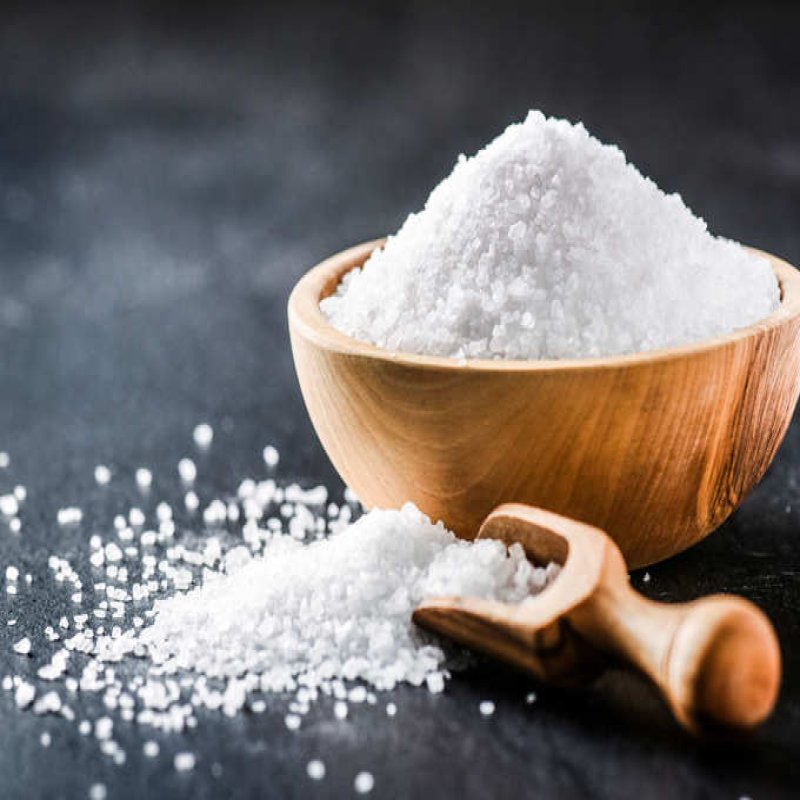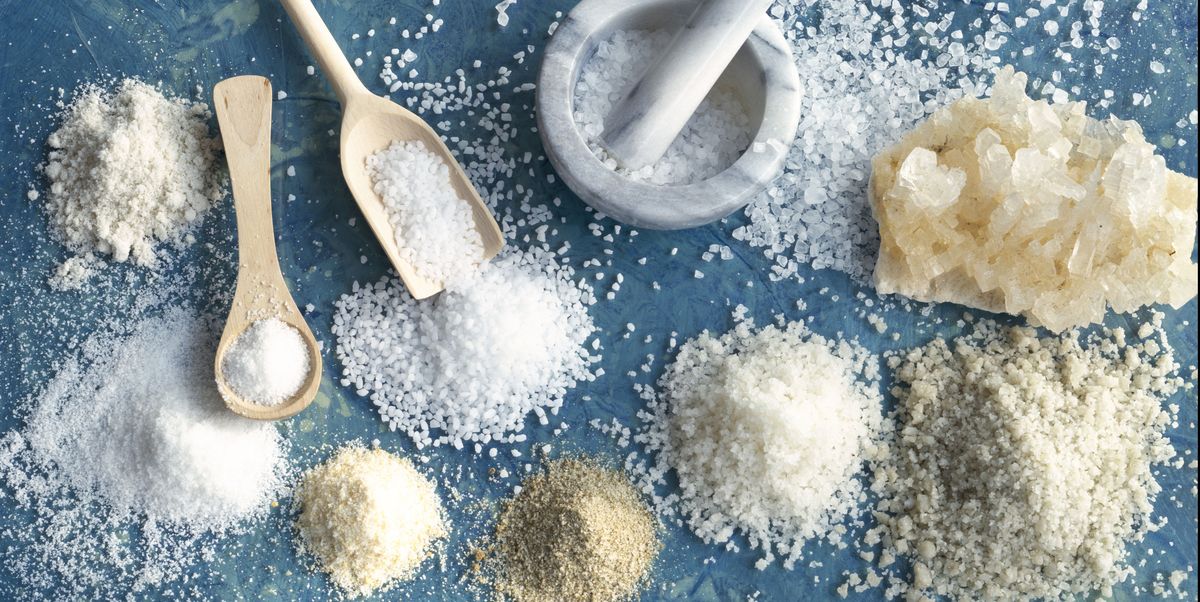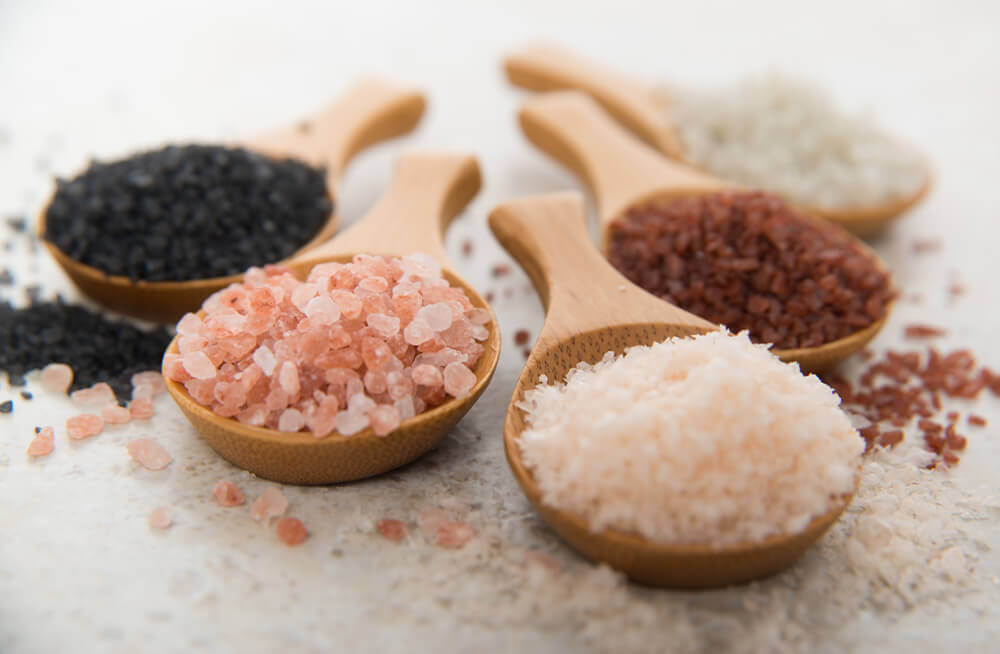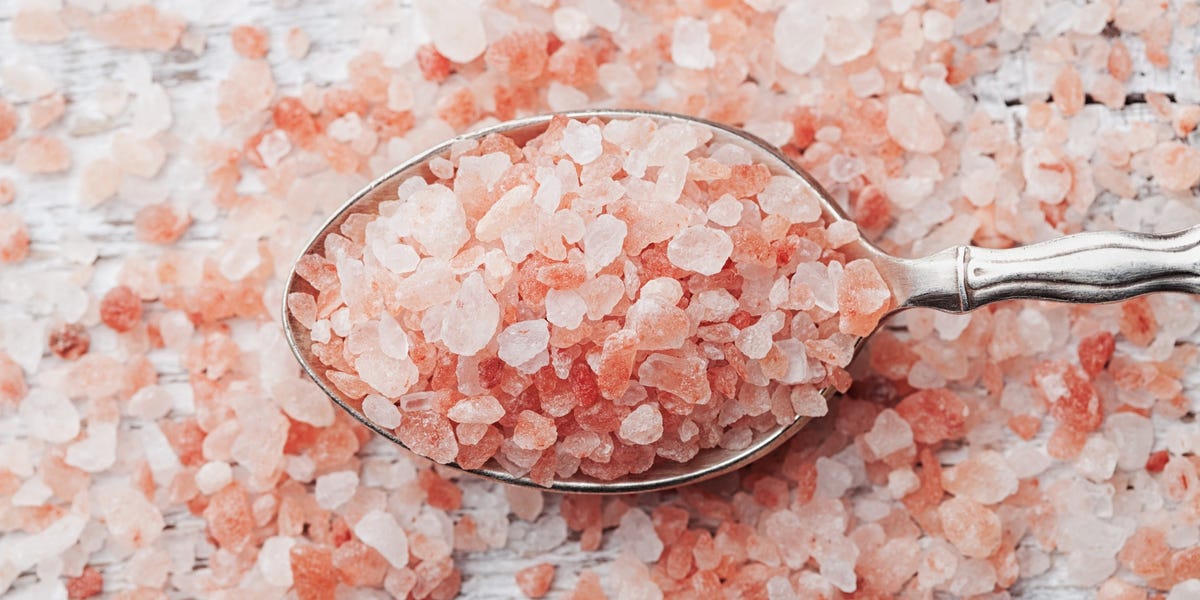
Did you know that in ancient Rome, salt was so valuable that the soldiers were paid with salt? In fact, it was so expensive that in the Middle Ages, salt was referred to as “white gold." But nowadays, it is a common ingredient used in every household. However, many people are choosing unprocessed salts, such as Himalayan salt, over regular table salt. Is there any difference? Read on to know which salt is best for you- mineral salt or table salt?
Salt is a natural mineral made up of white cube-shaped crystals mainly composed of sodium and chlorine. It is naturally present in seawater and oceans. Salts are originally translucent, odorless, and colorless. However, due to the presence of impurities and minerals, they have different colors, such as white, pink, grey, red, brown, and black.

Types of Salt
There are two types of salt: processed salt (“table salt”) and unrefined natural salt (mineral salt or sea salt). Sea salt and table salt share the same content of sodium chloride in them, but only sea salt retains the trace elements found in saline water. These retained trace minerals lead to the difference in taste as well as some health benefits. They also vary in texture, flavor, and grain size.

Refined Processed Salts or Table Salt
Refining uses an energy-intensive process that strips the trace nutrients out. It also leads to the addition of additives like fluoride and synthetic iodine, as well as anti-caking agents.
Anti-caking agents like E554 sodium aluminosilicate, which is most commonly used, come with possible side effects such as constipation. Aluminium derivatives in the anti-baking agent have also been associated with a number of health conditions, such as Alzheimer’s disease.

All these additives and anti-caking chemicals can cause discoloration in refined salt, so bleaching agents are then used to restore the desirable white color.
So, to summarize, refined table salt is that which has been stripped of all its natural trace minerals, and now contains synthetic iodine, fluoride, anti-caking food additives, and bleaching residues.
Unrefined Salts or Mineral Salts
In contrast to refined table salt, most sea salt is naturally gathered and dried and contains a wealth of trace minerals and electrolytes that are easily assimilated by our bodies.
Unlike refined salt, which contains the minimum essential elements and minerals, natural whole salt contains about 80 essential mineral elements (potassium, magnesium, calcium, sodium, and more) in very small amounts.

These mineral salts and electrolytes are key ingredients in the production of enzymes as well as the immune system, adrenal, and thyroid functions. Natural salt is not a major source of minerals in our diet. However, like any whole food, sea salt has a natural balance of minerals, excluding the toxic additives.
Classification of Salts
Classification of salt depends upon the origin, the process of extraction, and its mineral content.
Himalayan salt
Himalayan salt is one of the healthiest and purest forms of natural salts. These salts are of prehistoric origin and are completely natural. They are mined and not processed from seawater, which preserves the salt’s purity and keeps the mineral content intact.
Himalayan salt contains around 84 nutritional elements and essential minerals that are small enough to be absorbed by the cells in our body. This salt helps maintain the electrolyte balance in the body. Its natural elements regulate blood sugar levels, maintain the water content in our bodies, promote a strong pH balance in the cells, particularly the brain cells, and also slow down the aging process.

It also helps in the generation of hydroelectric energy in the cells, which promotes better nutrient absorption in the intestinal tract. It promotes respiratory and sinus health. In combination with water, it helps regulate our blood pressure.
You can use Himalayan salt in various products ranging from personal care products, bath products, and food flavorings to home health products such as Himalayan salt lamps, drinking therapy, and much more.
Grey Salt or Celtic Salt
Colored by the clay from which it is produced or harvested, grey salt is often called Celtic Sea Salt. It is manually raked in Brittany, France, where the natural clay and sand create moist, mineral-rich crystals that help retain its moistness.

Grey salt can help restore electrolyte balance and has alkalizing properties. It can also prevent muscle cramps, much like pink salt. However, this salt is a bit more expensive compared to normal salts due to the labor-intensive process of hand-raking. Nutritional comparisons between the Celtic salt and the Himalayan salt reveal that the sodium content is lower and the content of magnesium is higher in the Celtic salt or grey salt.
Black salt or Kala namak
Black lava salt (volcanic rock salt) is unrefined. It originated in Hawaii. Its black color is due to the presence of activated charcoal, which aids in digestion and removes impurities in the body.

There is also another black salt, kala namak, which originates from India and is actually pink once it’s ground. It has a high sulfur content and traces of other elements, which is why it is thought to have a beneficial effect on digestion. Since black salt has less sodium than normal refined salt, it can be helpful for treating high blood pressure.
Rock Salt or Sendha Namak
Rock salt, or sendha namak, as it is popularly known, is the purest form of salt that is unprocessed and raw. As a result, it lacks environmental pollutants and their chemical components. Contrary to popular belief, rock salt is not as kala namak as we think. It is actually known as sendha namak in Hindi. It is a highly crystalline salt that is made by evaporating seawater and does not contain high amounts of sodium chloride, unlike table salt.
/rocksaltYingko-865beb5c147d4a4a9fe980b4053e330e.jpg)
Rock salt is also low in iodine and contains traces of magnesium, potassium, and zinc. It facilitates the cellular absorption of minerals and plays an important role in replenishing the electrolytes and balancing the pH of the body.
Red Salt
Another Hawaiian salt, this salt gets its color from the volcanic Hawaiian clay called "alaea." As water evaporates, the salt is trapped in tidal pools, where it mixes with the alaea, thus giving the red color.

It contains the highest concentration of essential trace minerals of any salt and is very high in iron. This salt can help replenish low levels of iron in the body.
Persian Blue Salt
This bluish-tinted salt has a very distinctive property that separates it from all. It tastes a bit sweet, which is not so common when talking about salts. These are present in the ancient lakes of the Middle East, especially Iran. The blue color comes from the high amount of mineral that is present in it. One of the rarest kinds of salts, definitely not so pocket-friendly, but these are highly beneficial for your health. It is rich in magnesium, calcium, potassium, and iron.

Benefits of Unrefined Salt
The benefits of unrefined salt are many. Some of them are as follows:
Improves Sleep
While sleeping, some people have this problem of saliva flowing out of the mouth. It indicates a salt shortage in the body. A deficiency of salt in our body can lead to a shortage of water, and the salivary glands, sensing this shortage, produce more saliva. Sea salt helps in the production of two hormones, serotonin and melatonin, that enable you to deal with stress, thus making you relax and sleep better at night.

Aids Digestion
Sea salt aids in the digestive process by stimulating the salivary glands. It helps in the production of digestive juices, which facilitate quick digestion. Salt also prevents constipation by preventing an unhealthy buildup in the digestive tract. Consuming salt in a safe quantity also aids in the absorption of food through the intestinal tract.
/human-digestive-system-anatomy-1137357284-f3c8c90f101e41e585ac61bdf700386c.jpg)
Maintains Immune System
Sea salt is the world’s oldest antibiotic due to its anti-viral properties. Thus, sea salt can be a great substitute for antibiotic drugs. It not only strengthens your immune system, enabling you to fight off cold, fever, flu, and autoimmune diseases, but also does not have any side effects like antibiotic drugs.

Reduces Osteoporosis Risk
Salt is essential to keep the bones healthy, and nearly one-fourth of the salt is stored in the bones. A deficiency of salt and water can cause the body to draw sodium from the bones, which can lead to osteoporosis. Thus, drinking plenty of water and consuming salt in moderation can help prevent osteoporosis.

Maintains Electrolyte Balance
Since sea salt is not exposed to high heat or stripped of its natural minerals and is devoid of harmful synthetic ingredients, it helps alkalize your body. It eliminates the risk of developing serious, life-threatening diseases by preventing and reversing high levels of acid in the body. The minerals maintain a proper electrolyte balance in the body, which aids in the proper functioning of the nervous system and cellular functions.

Prevents Muscle Spasms
Potassium is a mineral that is vital for the proper functioning of the muscles, regulating blood pressure, improving cardiovascular health and maintaining bone strength. It also helps in regulating fluid balance and controlling the electrical activity of the heart and other muscles.

Sea salt contains small amounts of potassium and enables proper absorption of potassium by the body from other foods as well, thus preventing muscle pains, spasms, and cramps.
Improves Heart Health
Salt, in general, is considered harmful for heart health as it increases blood pressure. However, consuming sea salt mixed with water in small recommended dosages can reduce the level of cholesterol, maintain blood pressure, and regulate an irregular heartbeat. Therefore, it protects you against atherosclerosis, heart attacks, and strokes.

Keeps Hydrated
The human body contains roughly about 70% water. Sodium chloride or common salt helps sustain the level of water, maintaining the extracellular fluid and promoting optimal blood flow. These properties of salt help us fight infection and keep the body hydrated.

Maintains Blood Pressure
Urination not only causes loss of water but also depletes the level of salt content from the body. Additionally, as the body tries to hold on to the salt and water, your blood pressure rises. Thus, a dash of salt with water can help overturn the effects of urination and maintain normal blood pressure. However, it is important to avoid overconsumption.

Salt is the most widely used seasoning in the world. Unrefined salts are clearly better than processed “table salts”. The taste, texture, color, and grain size also varies among the different types of unrefined salts. So, now that you know about the benefits, what do you choose – mineral salt or table salt? Let us know in the comments section below!


.png)


